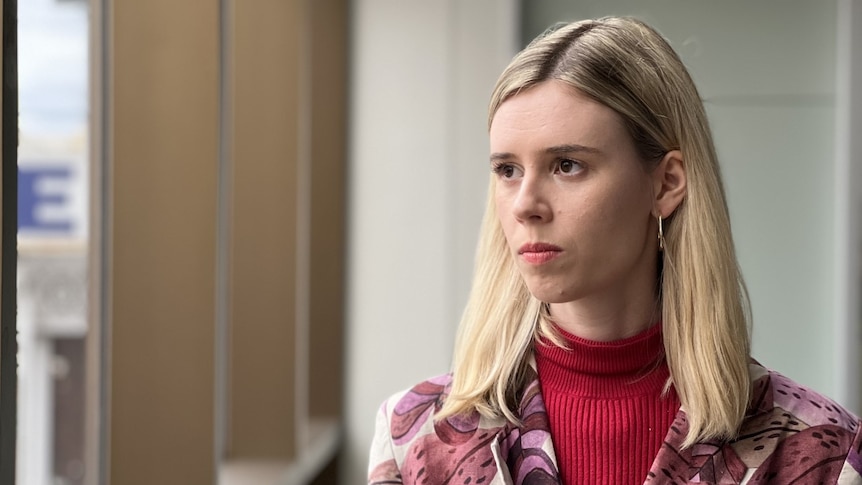Tessa Jones* was forced to give up a job she loved after a prolonged and traumatizing experience of sexual harassment.
Key points:
- The Working Women’s Center will receive $2 million in funding over three years
- The service will use the funding to hire more lawyers
- One in three women have experienced sexual harassment in the workplace
The 28-year-old said her complaints went nowhere because her alleged harasser was a senior staff member who laughed when she asked him to respect boundaries.
“I just kept saying, ‘stop’ and kept saying, ‘I can’t take this anymore’ and there was no change in behaviour,” she told ABC News.
“Dealing with it was really, really difficult because I was so young, I had no tools to deal with it and I didn’t understand what was going on and why.
“I trusted this person completely — it was a bit of a nightmare.”
Ms Jones — who is now a self-employed creative director — turned to the Working Women’s Center in Adelaide for support after deciding to leave the toxic working environment.
“For me, I had to go through this, I couldn’t go around it, I couldn’t ignore it. I had to go straight through it and the center helped me do that,” she said.
The South Australian Government will give the center $2 million over the next three years so it can employ more lawyers as its caseload continues to increase.
SA Attorney-General Kyam Maher said the funding was “really important” and aligned with recommendations made by federal Sex Discrimination Commissioner Kate Jenkins during her 2021 review.
“Many women don’t just suffer sexual harassment at work, there’s often underpayment of wages so it’s critically important that women have a resource like the Working Women’s Centre,” he said.
Center director Abbey Kendall said demand for the service was “huge”.
“As a community, we’ve really only been looking at and addressing sexual harassment in the workplace for the last two to three years,” she said.
She said in the last financial year 14 per cent of inquiries to the center were about sexual harassment and a further 38 per cent were about sexual harassment and discrimination.
“But that’s not an accurate reflection of what is going on in the workplace because we know one in three women experience it across Australia,” she said.
“This additional funding will allow us to reach more women and allow them to come forward in a safe way, which hasn’t been the case before.”
The conversation needs to change
Ms Kendall said a lot of the conversations about workplace sexual harassment centered on “what women should do when it happens to them”.
But she said it needed to shift to a conversation about how to stop perpetrators from preying on people both in the workplace and outside of it.
“From the Working Women’s Center perspective, we need to have more of a focus on primary prevention and instilling gender equality and respect for girls and women right from primary school so that filters up into our workplaces,” she said.
She said penalties for perpetrators and employers that allowed their behavior to flourish needed to be stronger and there needed to be restrictions on the use of non-disclosure agreements.
“Non-disclosure agreements are often misused and it really gags the issues of sexual harassment in the workplace because you can’t name and shame who the perpetrators are and it allows them to continue on with their employment,” she said.
She said the Fair Work Act was last year amended to describe sexual harassment as “serious misconduct” — a step in the right direction.
*Not her real last name
.
